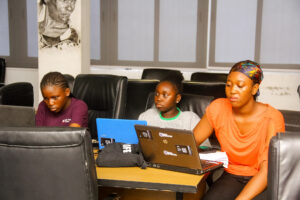Let’s face it – remote learning has become the new norm, and those of us in the tech world have had to adapt quickly. Gone are the days of in-person lectures and whiteboard brainstorms. Now, we’re navigating the virtual landscape, trying to create engaging online experiences that keep our students (and ourselves!) energized and excited to learn.
But let’s be honest, the transition can be daunting as we face some issues or distractions.But fear not! With a few strategies in your toolkit, you can turn remote learning into an engaging and effective experience. Let’s dive in!
Start with the Right Tools
Having the right tools is the foundation of effective remote education. Platforms like Zoom, Microsoft Teams, and Google Classroom have become staples, but don’t stop there. Interactive tools like Kahoot! for quizzes, Padlet for brainstorming, and Flipgrid for video discussions can transform a monotonous lesson into an interactive experience.
Think beyond the standard video calls and explore platforms like Kahoot or Quizizz for quizzes that make learning feel like a game. Who doesn’t love a little friendly competition? You can even create breakout rooms for group discussions, where students can collaborate on projects or brainstorm ideas.
Imagine a history class where students can participate in a live trivia game about ancient civilizations. Not only does this reinforce learning, but it also adds an element of fun. Plus, you’ll get to see who’s really been paying attention (or who’s just really good at Googling).
Create a Structured Yet Flexible Schedule
While flexibility is one of the perks of remote education, a little structure goes a long way. Establishing a clear schedule helps students know what to expect and when to expect it. This doesn’t mean you need to stick to a rigid timetable, but having set times for live sessions, assignments, and breaks can create a sense of routine.
A clear agenda for each session helps students know what to expect and keeps the class on track. Consider using tools like Google Calendar to keep everyone in the loop. You can even color-code events! Just make sure to include some time for break in between sessions.
Foster a Sense of Community
One of the biggest challenges of remote education is the feeling of isolation. To combat this, focus on building a sense of community among students. Encourage group projects, peer reviews, and even virtual study groups. Platforms like Discord or Slack can be great for creating informal channels where students can chat, share resources, and support each other. Learning is often a social activity. Encourage students to work together on projects, even if they’re miles apart.
Leverage Multimedia
A picture is worth a thousand words, but a video can be worth a million. Use multimedia resources like educational videos, podcasts, and virtual field trips to make learning more dynamic. Not only does this capture your students’ attention, but it also caters to different learning styles. For example, if you’re teaching a biology class, a virtual tour of the Smithsonian National Museum of Natural History can be both informative and exciting.
Encourage Feedback and Adaptation
Always encourage feedback from your students. After all, they are the ones experiencing the remote learning environment firsthand. Create anonymous surveys or hold open discussions about what’s working and what isn’t. This not only shows that you value their input but also allows you to adapt your approach based on their needs.
You should also use digital tools to give timely and constructive feedback to your students. Platforms like Google Docs allow you to comment on assignments, making the feedback process seamless. It’s the digital equivalent of handing back a paper with personalized notes, helping students understand what they did well and where they can improve.
Keep Learning Fun
Finally, remember to keep learning fun. Gamify lessons with rewards and challenges. Use storytelling to make subjects come alive.The goal is to make learning something students look forward to, not dread.
In conclusion, making remote education effective and engaging requires a mix of the right tools, clear communication, and a bit of creativity. By fostering interaction, collaboration, and a sense of community, you can create a remote learning environment that is both educational and enjoyable
Written by : Afape Stephen



